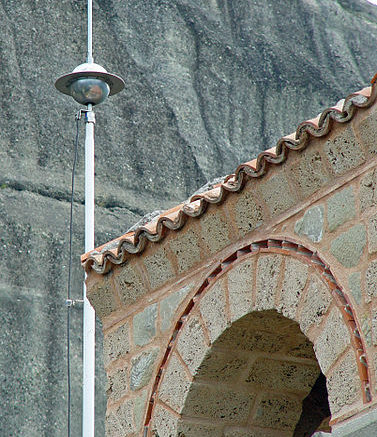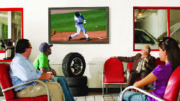The story goes that Benjamin Franklin was flying a kite in an experiment to see if lightning and static electricity were the same thing. He observed that a Leyden Jar (an early form of capacitor) showed that it was storing electricity just because it was connected to a kite which was being flown in an electrical storm. Or at least, that’s how the story goes. It’s not likely the kite was struck by lightning, which most people believe. That would have caused it to explode instantly. Just being in the static-laden air was all it took.
It may or may not have happened. Many folks tried to duplicate the experiment, and some died doing it. It doesn’t matter. Mr. Franklin certainly did a lot of work about electricity leading to his invention of the modern lightning rod in 1749. There were other metal tips on buildings before this, but this was the first time that a metal rod with a wire running to the ground was used as a safety device.
By the way, do not try to duplicate that same experiment.
As important as ever
Lightning rods are as important today as they ever have been. For most of the last century, every home had a lightning rod in the form of an over-the-air antenna. Today, over-the-air antennas are a little less common. (Want to change that? Buy one.) Today, even new construction generally has some sort of lightning arrestor or lightning rod in the form of a chimney cap or grounded vent in the roof. This is especially true in the fire-prone west where such things are required by building code.
Lazy lightning?
Lightning isn’t smart, and it’s actually lazy. Lightning happens when static electricity formed by cloud movement becomes so great that a spark is generated. This spark travels through the air in the easiest possible way and is attracted to the highest point where it can safely travel. A metal rod at the highest point in the home is an easy target for lightning and if that rod is attached to a grounding wire, a lightning strike goes from being a house-destroying fire to an annoyance that might short out a few things in the home.
Realistically though, that’s not the kind of work a lightning rod really does. A lightning strike to your home would decimate the lightning rod and melt the wire it was attached to. But, it would probably save most of your home. Lightning rods do everyday service by dissipating small amounts of static electricity near your home. This makes lightning strikes less likely near your home and that really makes a difference.
Grounding is a must
We’ve talked before about how proper grounding is essential to any installation, especially if you’re putting a metal object like an antenna or satellite dish near the highest point in your home. Don’t neglect this step. Grounding blocks are inexpensive and copper wire is easy to get. Take a few minutes and be safe!
And of course, shop at Solid Signal for everything you’ll need. It’s worth doing now… before there’s a problem.





